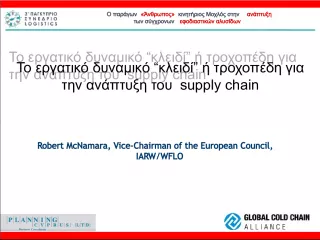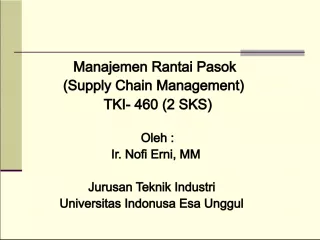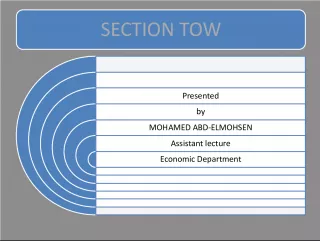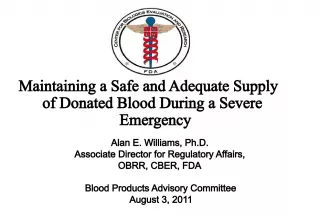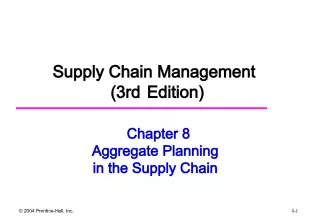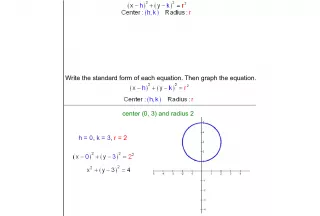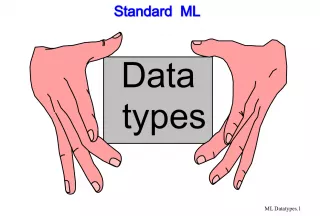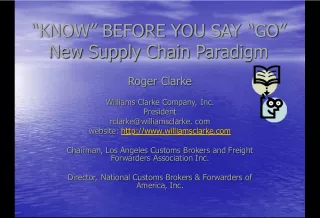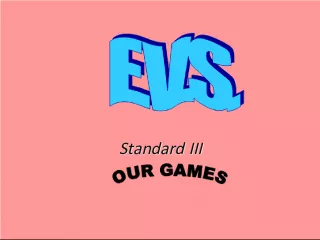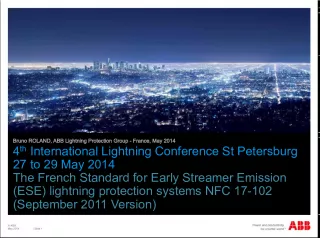The Global Standard for Efficient Supply Chains: GS1 Barcodes
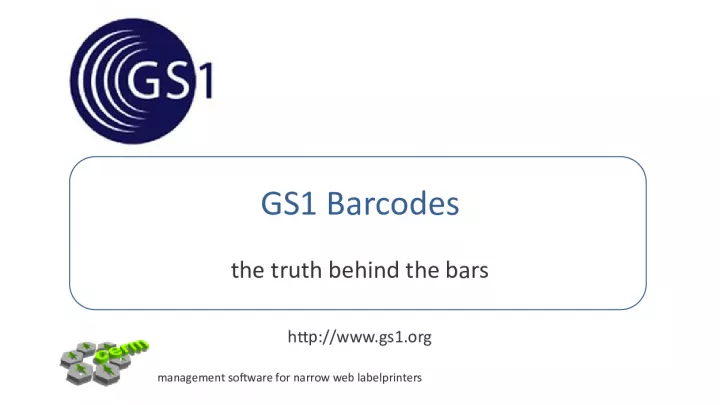

GS1 is a global organization that focuses on the development and implementation of standards and solutions to enhance supply chain efficiency and visibility. The GS1 system, also known as the EAN standard, is widely used across sectors and industries. Learn more about GS1 Barcodes - the key to global supply chain management - and how they can improve your business operations.
- Uploaded on | 1 Views
-
 cordilee
cordilee
About The Global Standard for Efficient Supply Chains: GS1 Barcodes
PowerPoint presentation about 'The Global Standard for Efficient Supply Chains: GS1 Barcodes'. This presentation describes the topic on GS1 is a global organization that focuses on the development and implementation of standards and solutions to enhance supply chain efficiency and visibility. The GS1 system, also known as the EAN standard, is widely used across sectors and industries. Learn more about GS1 Barcodes - the key to global supply chain management - and how they can improve your business operations.. The key topics included in this slideshow are GS1 Barcodes, supply chain efficiency, EAN standard, global standards, business operations,. Download this presentation absolutely free.
Presentation Transcript
1. GS1 Barcodes the truth behind the bars http://www.gs1.org management software for narrow web labelprinters
2. GS1 is an organization dedicated to the design and implementation of global standards and solutions to improve the efficiency and visibility of supply chains globally and across sectors. The GS1 system is the most widely used supply chain standards system in the world. GS1 standard is formally known as EAN standard. What is GS1?
3. The goal is to identify logistic units via a set of GS1-128 barcodes (formally known as EAN128 barcodes). So dont use simple Code 128! These barcodes are a subset (variant) of Code128. The GS1-128 is different because it has a special character (FNC1) at the start which is automatically present. This allows the scanner to recognize the type of barcode. GS1-128 barcode support the use of Application Identifiers (AI). An AI allow to identify different data blocs of information within 1 barcode, like product ID, batch ID, Best before date, etc. Note: GS1 also supports 2-D codes like Datamatrix. GS1-128 code (1)
4. The AI defines the meaning, the format and length (fixed or variable) of the data bloc that follows. The FNC1 symbol ( in L&L : chr$ (254) must also be used inside the barcode to identify the end of a data bloc with variable length. For data blocs with a fixed length, this is not necessary. Lists of all existing AI (approx. 100) exist. ( link ) The list contains the ID of all Application Identifiers and their official name (data title) to be used. GS1-128 code (2)
5. GS1-128 code sets A, B and C allow to specify the kind of characters. Code 128 includes 107 symbols: 103 data symbols, 3 start codes, and 1 stop code. To represent all 128 ASCII values, there are three code sets (A, B, C), which can be mixed within a single barcode. Code set A : can contain ASCII characters 00 to 95 (0-9, A-Z and control codes), special characters, and FNC characters. Code set B : can contain ASCII characters 32 to 127 (0-9, A-Z, a-z), special characters, and FNC characters. Code set C: can only contain 00-99 (encodes each two digits with one code) and FNC characters. A GS1-128 code can contain max. 48 characters. Start character, stop character and code set steering characters dont count. However, FNC1-characters inside the barcode do count! GS1-128 code (3) See L&L help See L&L help
6. A typical GS1-128 barcode has the following structure: Code set 128 start character (START-A, START-B or START-C) Code 128 FNC1 character (automatically present) Application Identifier (AI) Encoded Data Symbol Check character Stop Character GS1-128 code (4)
7. Worldwide 2 standard sizes are applied: A5 : 148 (fix) x 210 (variable) mm The full option label A6 : 105 (fix) x 148 (variable) mm Generally contains only 1 barcode : the SSCC. So in this case use of an electronic message is necessary. Not forbidden to put more information on the label if readability is guaranteed. GS1 label size
8. GS1 - A5 label size
9. GS1 - A6 label size
10. A standard GS1 label always consist of 3 parts: Part 1 (top) : Free information Part 2 (middle) : Human readable information Part 3 (bottom) : Max. 3 separated barcodes The 3 parts should be separated by a horizontal separation line. GS1 label layout
11. GS1 label Standard layout example Part1 Part2 Part3
12. Part 1 (top) : Free information This part allows to display information like company name, company address, company logo, etc. The partner who prints the label can determine the information shown in this part. GS1 label layout Free information
13. Part 2 (middle) : Human readable information This part is meant to display the information encapsulated in the barcodes in a human readable way. All information must consist of an AI name or data title (example: SSCC) followed by its data content (example: 3871234567449326). Data titles must always be in English! Font use is free, but easily readable fonts like Arial or Times New Roman are recommended. GS1 label layout Human readable information
14. Part 3 (bottom) : Barcodes All barcodes must use GS1-128 symbol technique A given AI (and its content) can only appear once on the label Max. number of separated barcodes on a label = 3 The barcode at the bottom of the label must at least contain the SSCC, but can contain also other information if necessary (however this is not advised). The SSCC barcode must have a minimum height of 32mm. The advised height for the other barcodes is also 32mm (with a minimum of 12,7 mm) GS1 label layout Barcodes (1)
15. The max. width of a standardized GS1-128 code is 165mm. Of course you always need to check the readability on all your scanning equipment! The display of HR text below each barcode is mandatory ! AIs Prefixes are always surrounded by parenthesis HR text beneath the barcode they. However, the FNC1 symbols needed in the barcode to identify the end of a variable date bloc should not be part of the HR text! Example GTIN: (01)10614141000019. Be aware: the parenthesis used to identify the AI in the HR text, should not be part of the barcode itself, they only appear in the HR text ! GS1 label layout Barcodes (2)
16. GS1 label layout Scaling Scaling rules for the barcodes: SSCC : must be between 50 and 80% Other : must be between 25 and 80% Scaling factor X-dimension (mm) 25 0.25 30 0.30 40 0.40 50 0.50 60 0.60 70 0.70 80 0.80 X-dimension is the width in mm of the smallest bar in the barcode. => See bar width value in L&L
17. Label layout Barcode printing direction Best practice for printing of barcodes on a label printer: Bars in the printing direction Bars opposite to the printing direction can cause errors since the paper transport (in the forward direction) can be shaky which causes variance in bar width.
18. GS1 label layout Tips & tricks To optimize barcode length, apply the following rules: Use AI with a fixed length before the ones with a variable length. Place AI containing an uneven number of characters or a lower or upper case character at the end of the barcode Always respect the quite zones: they should be at least 10x the width of the narrowest bar/space element. It is mandatory at the left and right side of the barcode. A quiet zone must not be less than 6.4mm wide.
19. GS1 label position Its not really our concern, but there are rules for label application on the packaging of the finished goods. You can find them here .
20. As a (paying) member of GS1 a printing company can obtain a Company prefix ID. Depending on their choice (price), the ID is 7 to 9 digits. This influences the range of possibilities for creation of GTIN and SSCC. This ID is linked to the company. Since the company prefix is part of the GTIN, GLN and SSCC, every single identified logistic unit can be traced to its origin / destination. GS1 Company prefix
21. SSCC (Serial Shipping Container Code) The SSCC is the GS1 Identification Key for a logistic unit which needs to be managed through the supply chain. The SSCC is a mandatory element on the GS1 Logistic Label and always c ontains the Application identifier + 18 data characters. SSCC composition overview:
22. SSCC (Serial Shipping Container Code) Appplication identifier : The AI 00 indicates the SSCC-18 data structure will follow. Extension Digit : has no defined logic and is used to increase the capacity of the Serial Reference. It is assigned by the company that constructs the SSCC! GS1 Company Prefix : GS1 Company Prefixes are 7-10 digits. Serial Reference Numbers are 6-9 digits. Serial Number : is assigned by the holder of the GS1 Company Prefix to uniquely identify a shipping container (logistic unit). A Serial Reference cannot be reused for a minimum of 12 months. The combined length of the GS1 Company Prefix and Serial Reference is always 16 digits. Check Digit : calculated using the Modulo 10 algorithm
23. GTIN (Global Trade Item Number) As the name implies, the GTIN helps automate the trading process basically buying and selling. The key benefit is to identify a product and to make sure information (technical and sales) about the product can be retrieved from the registered GTIN. Always c ontains 14 characters. So, if the provided GTIN is EAN-8 or EAN-13, you should add leading zeros !
24. GTIN - Assignment Who is responsible for the assignment of the GTIN to a product? => The company who owns the commercial trade mark of the product, independent from the producer. However, if the owner doesnt assign a GTIN, he can ask the producer or distributor to assign a temporarily GTIN to the product. In that case its an internal GTIN code.
25. GLN (Global Location Number) As the name implies, the GLN is a unique ID for the identification of registered physical locations and legal entities.
26. GEPIR - Search tool The site http://www.gs1.org provides a tool called GEPIR which allows to search for company data based on company name, an SSCC, a GTIN or a GLN.
27. The GS1 - EANCOM EDI is a standard for electronic data exchange. Example: The Dispatch Advice is an electronic version (XML) of the shipping note. Allows the receiver to read the detailed information of the content of a shipment and thus reduce time and errors. (similar to the paper supplier ASN we use). More information about GS1 in general and EDI messages can be found in: \\fileserver\Handl\handl_intern\implementatie_en_documentatie\GS1 GS1 EDI messages ( EANCOM )
